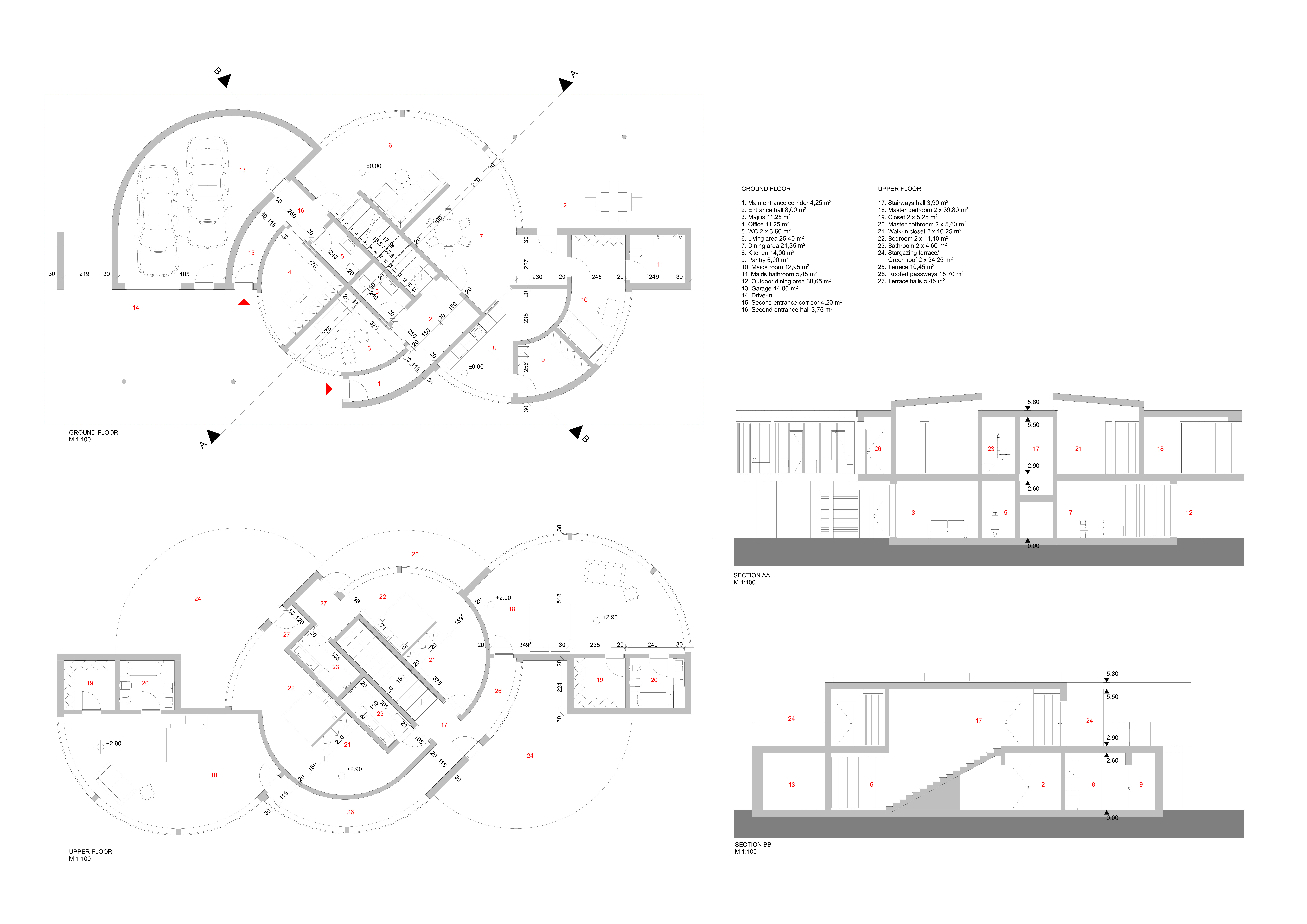5 key facts about this project
## Project Overview
The House of Future DUNE is located in Dubai, UAE, and represents a contemporary architectural response to both historical influences and modern living. The design reflects a commitment to sustainability aligned with the UAE's Modern Architectural Heritage initiative, while addressing the unique environmental challenges posed by the desert climate.
## Spatial Configuration and User Experience
The layout consists of rounded and circular forms that echo the shapes of sand dunes and the flow of wind, promoting an organic movement throughout the space. This configuration encourages interconnectivity among living areas, centered around a communal space that fosters social interactions while also ensuring privacy through well-placed sensory barriers. The design includes multiple interconnected rooms, enhancing the experience of space and community within the home.
## Material Selection and Sustainability
Construction materials have been carefully chosen to meet the functional requirements of a desert environment while promoting ecological responsibility. Key elements include tabby concrete for its thermal mass and cooling properties, timber for structural and aesthetic warmth, and glazed glass panels that integrate indoor and outdoor environments. The incorporation of prefabricated steel beams facilitates a robust structural integrity and expedites the building process. Additionally, innovative uses of microorganisms in construction practices exemplify a commitment to sustainable building techniques.

























































